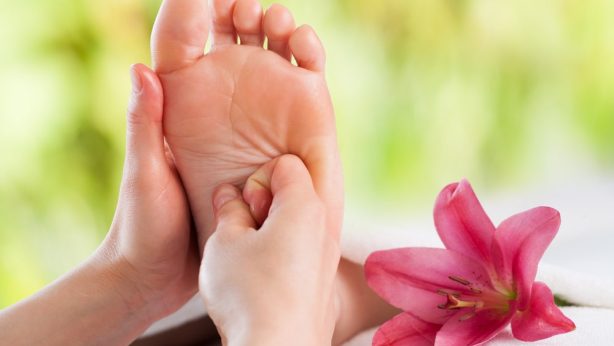Love The Skin You’re In

Our Skin has a lot of different functions. It is a stable but flexible outer covering that acts as barrier, protecting the body from harmful things in the outside world such as moisture, the cold and sun rays, as well as germs and toxic substances. … Our Skin also plays an important role in regulating your body temperature. Our skin is the largest organ of our bodies, how we care for our skin can delay/reduce signs of ageing and provide a healthy, younger, glowing skin. Winter can be very harsh to our skin, here are some useful tips during winter times, some of these tips can be applied as our everyday skin care routine.

Winter weather is not fun for skin. Cold weather and low humidity levels result in dry air, which then steals moisture away from the skin every second of every day. Without immediate care, dry skin can lead to cracking and bleeding, and harsh winter wind makes the problem worse. Indoor heat further robs the air of moisture, as do hot showers or baths and harsh cleansers.
Additional moisture helps, but you need to do more to actually counteract these effects and keep skin looking youthful and smooth. To reduce chapping, redness, itching, and keep skin more healthy and comfortable this season, try these tips.
1. Wash in Lukewarm Water
Hot showers and baths always feel good in the winter, but when you can, particularly when just washing your face or hands, choose lukewarm water to avoid stripping as many oils away from the skin.
2. Moisturize Immediately Afterwards
Your skin not only needs more moisture, but moisture right after you wash. Applying moisture to damp skin helps seal that dampness into the skin. Keep a bottle near the bathtub, shower stall, and at every sink and use liberally every time you wash.
3. Choose Moisturizer Carefully
Some over-the-counter moisturizers have petroleum-based ingredients that can actually further dry your skin in the winter months. Be sure to choose a smart formula that has natural, nourishing ingredients. Go for an oil-based rather than a water-based solution, as it’s more likely to help your skin retain moisture in the winter. Try Indie Lee’s natural moisturizing oils, as they’re made with natural, hydrating ingredients like lavender, chamomile, jojoba, and more, which help soothe dry, itchy skin.
4. Protect
Get used to wearing gloves and scarves to protect skin from cold winds, rain, and snow. Also, don’t forget the sunscreen. Winter sun can be just as damaging as summer sun, so apply a safe option like zinc oxide or titanium dioxide to any exposed areas.
5. Humidify
Heating systems dry out the air, so consider installing a humidifier in your home, particularly in your bedroom, to put moisture back into the air and help prevent your skin from drying out.
6. Drink
We tend to drink less water in the winter because we turn to hot drinks like cocoa and tea, but don’t forget that your skin needs hydration from the inside, out. A little warm water with lemon can be very refreshing and hydrating at the same time.
7. Overnight Moisturize
Dryer areas like hands, feet, elbows, and knees have thin skin and tend to lose moisture faster than other areas on the body. Consider slathering on a deep moisturizing balm Skin Food by Weleda at night, then wear cotton gloves and socks to seal in the moisture until morning.
8. Exfoliate
We often forget to help the skin slough off dead cells in the winter, particularly on our hands. Yet moisture can’t get in if the dead cells are too plentiful. Find an exfoliating mask and use it on your face and your hands, as well as gently on your lips, then follow immediately with moisture to truly see a smoother difference. Exfoliating body washes are also helpful in the winter months.
9. Avoid Toxins, Specifically Allergens and Irritants
Particularly if you have eczema, dermatitis, or psoriasis, you have to avoid allergens and irritants that may trigger a flare up. Winter skin is more fragile, so avoid irritating fabrics (like wool) and chemical-laden detergents, and use mild cleansers and moisturizers designed for sensitive skin. In addition, glutathione is considered the “master anti-oxidant” and helps your body detox.
10. Hydrate From the Inside Out
Eating foods high in water content can help hydrate your skin from the inside out. Try watermelon, cantaloupe, apples, oranges, kiwi, and watery veggies like celery, tomatoes, cucumbers, zucchini, and carrots. Make sure you’re getting enough vitamin C and zinc to support the healthy production of collagen and elastin. Also consider Be Well’s omega-3 supplement, or consume more fatty fish and flaxseed to give your skin the building blocks it needs to appear supple and smooth.
11. Change Your Cleanser
Cleansers can be extremely drying to the skin. If you’re used to using options that contain glycolic or salicylic acid, rotate with a more hydrating version that contains moisturizing ingredients. Try like Suki Naturals Moisture-Rich Cleansing Lotion, or for really dry skin, try a cleansing balm. After cleansing, don’t leave the skin naked for more than 30 seconds, as this can dehydrate it, leading to increased dryness. Apply a hydrating toner and moisturizer to seal in moisture.
12. Use DIY Masks
Homemade hydrating masks can provide needed moisture in the winter months. Use natural moisturizing ingredients like honey, avocado, yogurt, olive and jojoba oils, almond oil, bananas, and aloe. Mix what you like together to create a cream or paste, and leave on skin for 10-30 minutes for lasting hydration.
Source:
“Cold Weather Skin,” Bingham Memorial Hospital, October 25, 2013, http://www.binghammemorial.org/blog/2013/10/25/cold-weather-skin/.


